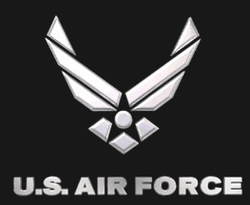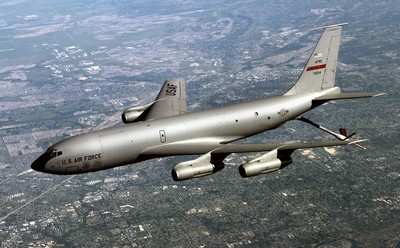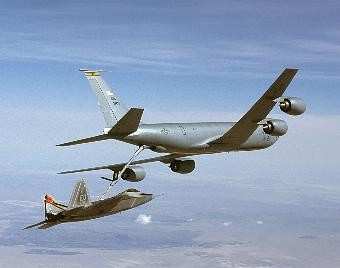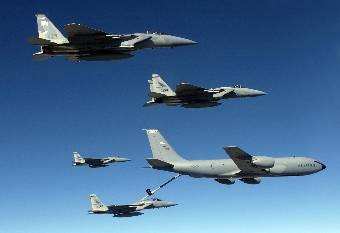 While many are focused on the formal
protest of the recent KC-45A contract award, the needs of the
warfighter -- and the nation -- remain unchanged. The Air Force's
nearly 50-year-old KC-135 Stratotanker must be replaced with a
newer, more capable aircraft as soon as possible.
While many are focused on the formal
protest of the recent KC-45A contract award, the needs of the
warfighter -- and the nation -- remain unchanged. The Air Force's
nearly 50-year-old KC-135 Stratotanker must be replaced with a
newer, more capable aircraft as soon as possible.
"This is a matter of national security and we can't lose sight
of that as a nation. It's critically urgent that we get on with
bringing a new tanker into our fleet; our global range and global
reach rely on the tanker," said Gen. Arthur J. Lichte, the
commander of Air Mobility Command. "Tankers give us the ability to
go anywhere on the face of the planet and strike our enemies, or
deliver cargo or humanitarian aid."
The tanker procurement, if it goes as planned, is still a
30-year process, which means Airmen could still be flying the
KC-135 into the year 2040, the general said. Considering most
airlines retired the commercial version of the KC-135 -- the Boeing
707 -- years ago, "It's unconscionable for us to ask our Airmen to
fly in, and attempt to maintain, aircraft that are 80 years old,"
he said.
The aging aircraft puts a significant strain on maintenance and
aircrews who keep them in the air, said General Lichte.
"The only reason the KC-135s are doing so well now is because of
the total force Airmen at our bases keeping them flying," he said.
"For every sortie we fly, aircrews and maintenance remain flexible
and consider a myriad of options if the primary aircraft can't fly.
Those Airmen make sure when that thirsty fighter is in the sky over
Iraq or Afghanistan, or that C-17 Globemaster III or C-130 Hercules
needs to provide food or relief to a country in need, they are able
to accomplish their missions. They make sure those airlifters,
rushing home with a wounded Soldier, Sailor, Airman or Marine, can
get them to the loving arms of their families and a U.S. hospital
for the critical care they need.

"The reason those tankers are airborne is because when they are
deployed, our Airmen work six days a week, 12 to 14 hours a day to
make sure they can launch them every day," he said.
Another issue facing tanker maintenance crews is the
availability of parts for such an old aircraft.
"Just like an old car, you start it up and hope it'll make it.
When it breaks down, you hope you can find the spare parts you need
to fix it," General Lichte said. "That's the problem our
maintainers face. Sometimes we have to go and manufacture new parts
because there are no more left on the shelves.
"We've come a long way since the 1950s and '60s when these
aircraft were sleek and new. Improved technologies and capabilities
are available and we need to fold them into our tanker fleet," the
general added.

Some key attributes of the new tanker will include the ability
to refuel with both boom and drogue systems, and the ability to
receive fuel as well as deliver it. Currently, for most KC-135s to
conduct drogue refueling operations, a boom drogue adapter must be
attached to the boom before takeoff. This prevents the tanker from
refueling receptacle-equipped aircraft in the same sortie.
The new tanker is also expected to carry cargo and passengers,
and have open communication architecture so it can receive data
from the ground quickly.
"We've also asked for the new tanker to have defensive systems
so we can fly closer into harm's way, and we've asked for systems
that can defend against today's threats as well as emerging threats
of the future," General Lichte said. "The bottom line is, the
warfighter needs a new tanker," he said. "Any delays or hesitation
are simply pushing the age of the tanker farther and farther out
and increasing the risk to our national security.

"My hope is that as we go through this process of fielding a new
tanker, following the letter of the law, we get through it quickly.
And, when we come out on the other side, we get a new, very capable
tanker to our Airmen as soon as possible," General Lichte said.
[ANN Salutes Staff Sgt. Monique Randolph, Secretary of the Air
Force Public Affairs]
 ANN's Daily Aero-Linx (05.06.25)
ANN's Daily Aero-Linx (05.06.25) ANN's Daily Aero-Term (05.06.25): Ultrahigh Frequency (UHF)
ANN's Daily Aero-Term (05.06.25): Ultrahigh Frequency (UHF) ANN FAQ: Q&A 101
ANN FAQ: Q&A 101 Classic Aero-TV: Virtual Reality Painting--PPG Leverages Technology for Training
Classic Aero-TV: Virtual Reality Painting--PPG Leverages Technology for Training Airborne 05.02.25: Joby Crewed Milestone, Diamond Club, Canadian Pilot Insurance
Airborne 05.02.25: Joby Crewed Milestone, Diamond Club, Canadian Pilot Insurance






